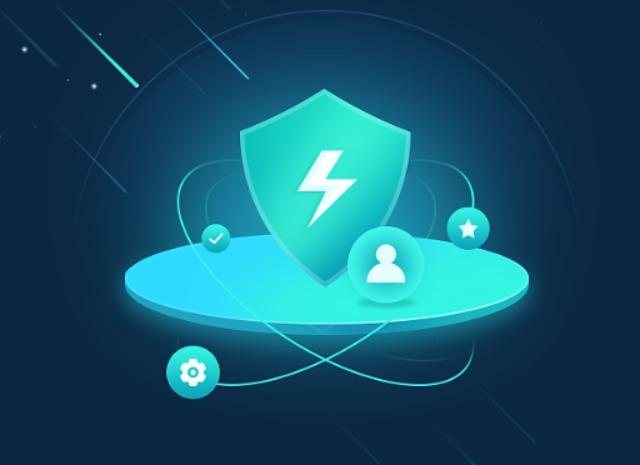Divine Fish: How Individual and Institutional Players Can Safely Increase Value and Scientifically Avoid Risks in the DeFi Space
Source: Cobo Labs
Written by: Shen Yu (Mao Shihang), Jiang Changhao, Lily Zhuo Cobo COO, Alex Zuo
 Cobo Labs is the largest cryptocurrency custody platform in the Asia-Pacific region and the most popular financial asset management service provider for institutions.
Cobo Labs is the largest cryptocurrency custody platform in the Asia-Pacific region and the most popular financial asset management service provider for institutions.
We focus on innovative projects, cutting-edge cryptocurrency technologies, global market compliance trends, market fundamentals, and volatility factors; aiming to help market participants and cryptocurrency enthusiasts lower the cognitive barriers to entering the market.
Core content creators include:
Shen Yu (Mao Shihang), Co-founder and CEO of Cobo, Co-founder of F2Pool
Jiang Changhao, Co-founder of Cobo, former Senior Scientist at Facebook
Lily Zhuo, COO of Cobo, former Chief Legal Compliance Advisor of a well-known $40 billion fund
Alex Zuo (Zuo Changbai), VP of Asset Management at Cobo, former Co-founder of TokenInsight, leader of the largest FOF in the industry
We also hope that lifelong iterative learners with a research spirit and scientific methodology in the field of cryptocurrency can join us to share insights and research perspectives with the industry!
This is the first article from Cobo Labs.
Shen Yu - Insights from a Master of Time Management
In the last week of August, the rarely seen Shen Yu appeared at an internal business communication meeting at Cobo to discuss the market demand for DeFi funds.
Shen Yu answered sharp questions from industry practitioners. Below, Cobo Labs has summarized the risks and self-reflections regarding current innovative opportunities such as DeFi and NFTs.
At the end, Shen Yu also shared insights from his personal life for everyone to enjoy!
I. The Three Soul Questions About Cobo
What is Cobo's DeFi risk control system like? How can DeFi funds ensure safety, similar to the recent PolyNetwork hacking incident? Are Cobo's fund assets operated by Shen Yu himself, and how can risk control be effectively managed?
Shen Yu:
First of all, Cobo did not participate in this project; it was my personal investment. However, we captured relevant information immediately and assisted in communicating with related channels, such as Binance and Tether, to handle this hacking incident, which went relatively smoothly. From gathering intelligence to internal team communication, we ultimately obtained effective information. We were quite fortunate and grateful for the collaboration of many security teams.
This hacking incident is actually a reflection on the DeFi industry. Due to the large amount involved, we have been contemplating investment methods in the DeFi field, especially mining, where the principal is at risk of uncertain security.
On how to ensure safety:
- Monitoring and Alerting
Cobo combines over a year of practice. Before investing large sums, we discuss project indicators, especially the risk of being attacked. If suspicious operations occur, such as changes in time locks or multi-signatures, the risk control monitoring will notify us immediately.
- Encrypted Machines to Accelerate Principal Withdrawal, Ensuring Fund Safety
In terms of blockchain security, Cobo employs multi-person collaboration, with an internal system to ensure asset safety through multiple permissions.
For example, if an alert signal is detected that may lead to principal loss, Cobo's online encrypted machine will automatically handle it. The encrypted machine holds a low-permission key, and if the monitoring system detects suspicious activity, it will withdraw the principal first, operating 24/7. By using special methods and strict risk control, we can react faster than hackers.
- Decision Committee
Cobo has a decision committee that conducts internal security audits after completing economic model audits for projects and anticipates common issues. We also communicate and warn about project information through our self-operated media and private domain "DeFi Farming," reminding project parties to upgrade and improve relevant modules. Through practice, we have helped DeFi mining participants resist some attacks. This continuous practice allows us to better manage risk control in the DeFi field and ensure the safety of the projects we participate in.
Regarding the Alert Issue: Reasons for Not Resorting to Legal Action
This is because, after the incident, we communicated with the public chain team immediately and utilized available channels, especially in tracing with security teams to see if we could identify the hacker or lock down certain individuals. If we resorted to legal action, the speed and response would not be as quick as our spontaneous organization. Moreover, DeFi is very complex for traditional law enforcement, and such hackers would certainly use money laundering tools immediately. If negotiations fail afterward, we will have legal means available if necessary.
II. How to Respond to the Market in Extreme Conditions
Now that we are in a bull market and prices have risen significantly, is it risky to enter and buy DeFi funds at this time? How should we respond to extreme market conditions like May 19?
Shen Yu:
DeFi provides us with new value-added methods and fair market interest rates. DeFi yields come from locking in principal value and obtaining tokens within DeFi protocols. Most of the yields will be hedged, and we will sell them quickly. In our automated tools, we sell at scale every 10 minutes. For extreme situations like May 19, we try to reduce leverage or automate processes to prevent such occurrences. The risks in DeFi, aside from contract risks, are generally manageable.
III. What Should Small Investors Do When Shen Yu Collapses a Mine?
Which mine should we invest in? Which designs in the current mining mechanism are more reasonable, and how can we prevent being collapsed by whales? There are simply too many mines collapsed by Shen Yu!
Shen Yu:
Currently, conventional mining yields are slightly risk-free, and the yield rates are recovering. The overall TVL of old mines and new public chains is also increasing, and there are many good mines available now.
The core issues in mining are safety first, followed by whether the economic model is reasonable, whether there is principal erosion, and whether large funds entering will collapse the mine.
Our investment committee conducts research and produces reports. Committee members test and run trials to see if the economic model is sustainable, find the model and price expectations of the track, and determine at what funding level positive and negative feedback will occur.
Especially regarding large investors entering, we need to calculate how much investment can yield the best returns. Of course, we also need to adjust according to market dynamics, calculating the range that the track, model, and valuation can bear. When a turning point arrives, we must take profits or cut losses. This is a highly dynamic process, and decisions change based on parameters to find the optimal solution for fund allocation and returns.
IV. What Do You Think About the Direction of the DeFi Track?
What is the next direction for DeFi development?
Shen Yu:
In the past year of DeFi development, we have established very important underlying infrastructures such as algorithmic stablecoins, underlying lending, and a rich array of derivatives. The head effect is already evident. Currently, performance issues are the main problem to solve. DeFi's locked assets are over $100 billion, but public chains can only support a few million users. With the industry's development and breakthroughs in scale, current performance cannot support these users.
A possible direction is to adopt multi-layer public chains. Within six months to a year, second-layer networks will form a head effect and gather a large number of core applications. Since DeFi protocols are dispersed across various public chains, cross-chain protocols are an unavoidable topic. Once second-layer networks are resolved, liquidity solutions and cross-chain protocols will be a direction.
Additionally, the extension of DeFi, such as NFTs and GameFi, has many protocols combined with DeFi. There will be explosive opportunities in this area in the short term, likely within 3-6 months, as games and the metaverse combine with DeFi, presenting growth opportunities.
Finally, the recent discussions by U.S. regulatory agencies regarding DeFi also present opportunities for the DeFi industry, such as on-chain data analysis and the essential needs brought by regulatory policies, with a greater focus on privacy protocols and the technological iteration and development that ensures anonymity.
V. The Hottest NFTs Right Now
What are your current involvements with NFTs, and what is the underlying logic for investing in NFTs?
Shen Yu:
The basic logic is relatively simple; the industry is in a very early stage. Everyone is focused on the metaverse, with the core trigger point being the blockchain's native redefinition of art and aesthetic standards. The current image craze has established CryptoPunks, which are not just avatars but also represent social recognition and social value.
For investors, they can allocate 70% of their assets to major cryptocurrencies, 20% to emerging fields (referring to those that have developed over time and have been validated), and 5-10% to assets that seem to have potential but are still early-stage, balancing conservative and aggressive directions. If any area experiences explosive growth, the overall returns will be good.
At the same time, NFTs are consumer products, not speculative assets. Currently, those entering the market have a lot of idle funds, and the market is quite small. The market capitalization of avatar-type NFTs is very low, and any slight influx of funds can lead to volatility driven by liquidity overflow, rather than sustained good liquidity. Therefore, everyone should participate according to their own situation.
VI. Lucky Bag: Shen Yu's Private Life
How does Shen Yu balance work and rest? The market is so hot that there’s hardly any time to sleep properly.
Shen Yu:
Most NFTs are overseas projects, and they operate during the early hours. Many friends have adopted distributed sleep patterns, resting a bit and checking in. Everyone is adapting, but the bull market is indeed tough.
For traditional mining, it used to be college students watching the mines, but now it's all about DeFi. Core assets still need to be monitored, including economic models and security reports, hardware wallets, and participation in DeFi and NFT projects. Over the past year, I've spent nearly 100 hours a week, which is more than in the past four years combined.
Aside from making money, what other hobbies do you have?
Shen Yu:
I raise fish, specifically marine fish, but I can’t keep corals alive (here, the fish refer to real-world aquatic organisms).











